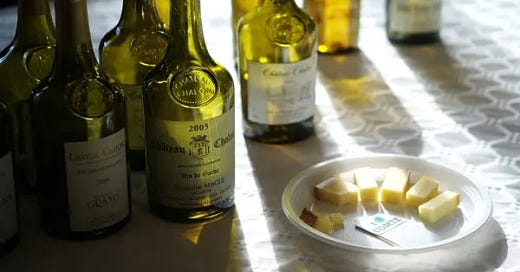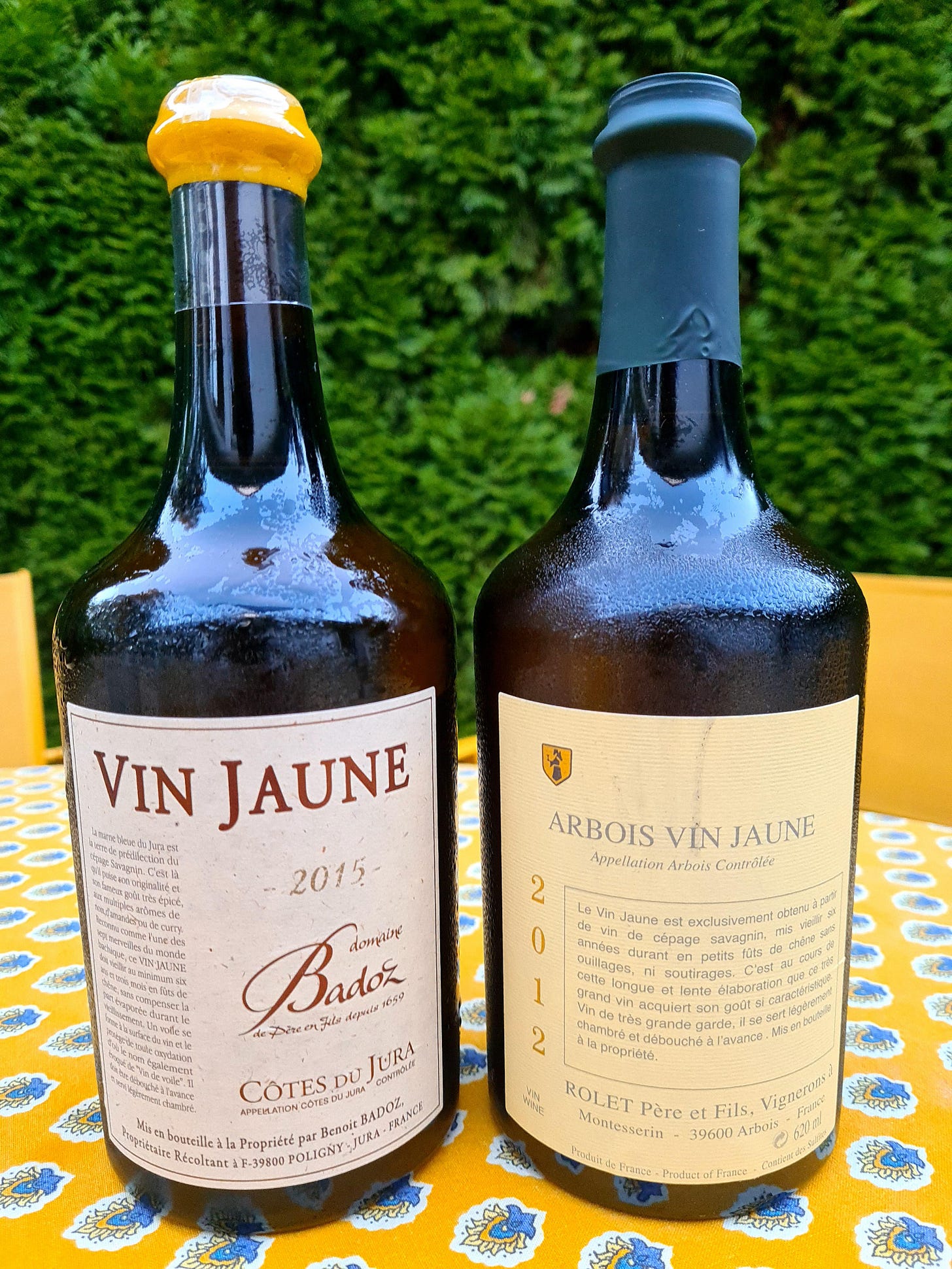Big Win for Jura: Vin Jaune Finally Breaks Into the US Market
"It was easier to get an AK-47 into the US than a clavelin."
Big win for Jura - Vin Jaune can finally be sold in its original 62cl clavelin format in the US. It’s a long-overdue move, removing one of the biggest barriers that kept Jura’s most iconic wine out of the American market. Until now, producers had two choices: re-bottle (which was never going to happen) or stay out of the US altogether. But Vin Jaune isn’t just any wine - it’s a six-year, three-month commitment to time, oxidation, and terroir, and its bottle size isn’t just a quirk, it’s part of the story. With this regulation change, Jura winemakers no longer have to compromise, and American drinkers finally get access to Vin Jaune the way it was meant to be.
The Rocky Road
For decades, the US’s rigid bottle size rules kept Jura in a chokehold while wines from other French regions had no trouble making it stateside. Unlike Champagne, which could just adjust to 750ml formats, Vin Jaune’s unique aging process made that impossible - rebottling would’ve destroyed the integrity of the wine. It was a glaring double standard: Burgundy and Bordeaux got to play freely in the US, while one of France’s most fascinating, age-worthy wines sat out. Hungary’s Tokaji faced a similar roadblock with its 500ml bottles before winning approval after relentless lobbying. For Jura, this regulatory wall meant lost sales, limited international recognition, and a huge missed opportunity in a market increasingly drawn to distinctive, terroir-driven wines.
But this isn’t just a win for Jura - it signals a broader shift in the US wine market towards global inclusivity. Historically, US bottle size restrictions weren’t about quality or authenticity; they were about standardising taxation and distribution. The result? Wines bottled in formats that reflected centuries of tradition - Alsace’s 50cl flûte for late-harvest wines, Germany’s Rheingauer Schlegel - were effectively shut out. Now, with the door open for Vin Jaune, producers who built their identities around specific bottle sizes can finally reach American consumers without compromise. Château-Chalon, synonymous with the clavelin, no longer has to change its ways to fit US rules. Instead, the US is adapting to the wine - not the other way around.
What Does the Future Hold?
The timing couldn’t be better. The rise of oxidative and long-aged wines - think en rama Sherry, Madeira, aged Riesling - proves that the appetite for these styles is growing. Vin Jaune, with its wild aromatics, layered complexity, and affinity for umami-driven food pairings, has all the right elements to thrive in this trend. But let’s be real -just because it’s legal now doesn’t mean cases are going to fly off the shelves overnight. Jura still faces a steep learning curve in the US. Unlike Burgundy, where consumers already know what they’re getting with Chardonnay and Pinot Noir, Vin Jaune requires more education. Importers need to step up, sommeliers need to champion it, and winemakers need to lean into storytelling. Jura can’t rely on name recognition; it needs to sell its history, its craftsmanship, and the sheer insanity of a wine that ages for over six years under a veil of yeast.
That said, hurdles remain. Distribution needs work, consumer awareness is low, and Vin Jaune’s price point - thanks to its lengthy élevage and tiny yields - puts it at a disadvantage against more affordable oxidative styles like fino Sherry. But what Jura lacks in volume and accessibility, it makes up for in scarcity and intrigue. Positioned correctly, Vin Jaune could carve out a niche as a collectible, high-value wine rather than just another curiosity.
At its core, this regulation change is about more than just letting a wine into the US - it’s about recognising and respecting winemaking traditions as they are, not as they’re forced to be. It’s a step towards a wine market that values authenticity over arbitrary restrictions. If Jura plays its cards right, this could be the start of something much bigger. And if nothing else, it means American drinkers finally get to experience Vin Jaune the way it was meant to be: unfiltered, uncompromised, and straight from the clavelin.
As always, thanks for reading - stay thirsty, stay curious. If you would like to further support me, you can follow me on Instagram or LinkedIN.
Aleksandar







Thank you for sharing! I teach WSET Level 3, so update with insights like these are really valuable. I didn’t even know about the Takij story—very interesting!
Hello Aleksandar,
I'm glad my piece on wine-searcher resonated with you, especially the quote that was given to me by an importer (anonymously), which you used at the top of this peice. The reality, is that there is already quite a lot of Vin Jaune (a lot, relative to the tiny amount available) sold in the US and only a very few producers (certainly no top producers) have any more to sell, so the change in law is interesting in that it legalised the tiny trade that was already in place.
Contrary to what you wrote further down the piece, Jura has been doing spectacularly well in the US for over 12 years now, especially in the last 8 years (mainly the large number of excellent organic producers, but not only) It's the region Somms love to speak about and share. Until Paris caught up and became interested in the Jura in the past few years, there was more Jura wine available in NYC than in Paris. The biggest problem is not on the US side, it's on Jura's side in that the effects of climate change have brought some drastically reduced vintages (more so than other regions), and so quantity is hard to find. What's more, many producers are no longer looking to sell to the US as they have sufficient customer closer to home.
As for Vin Jaune, it represents just 4 - 5% of what Jura produces/sells worldwide, and that's from a wine region that produces less than 0.2% of France's total wine production.
More details in my two books, Jura Wine (2014) and its companion volume, Jura Wine Ten Years On, published last year, available from Académie du Vin Library.